Articles Carpal Tunnel Syndrome
This article explains what carpal tunnel syndrome is, causes, risk factors and management.
Basic Anatomy
The nerves in the upper limbs all arise from the neck. As they descend towards the hands they branch off into 3 main nerves :
- Ulnar Nerve
- Radial Nerve
- Medial Nerve
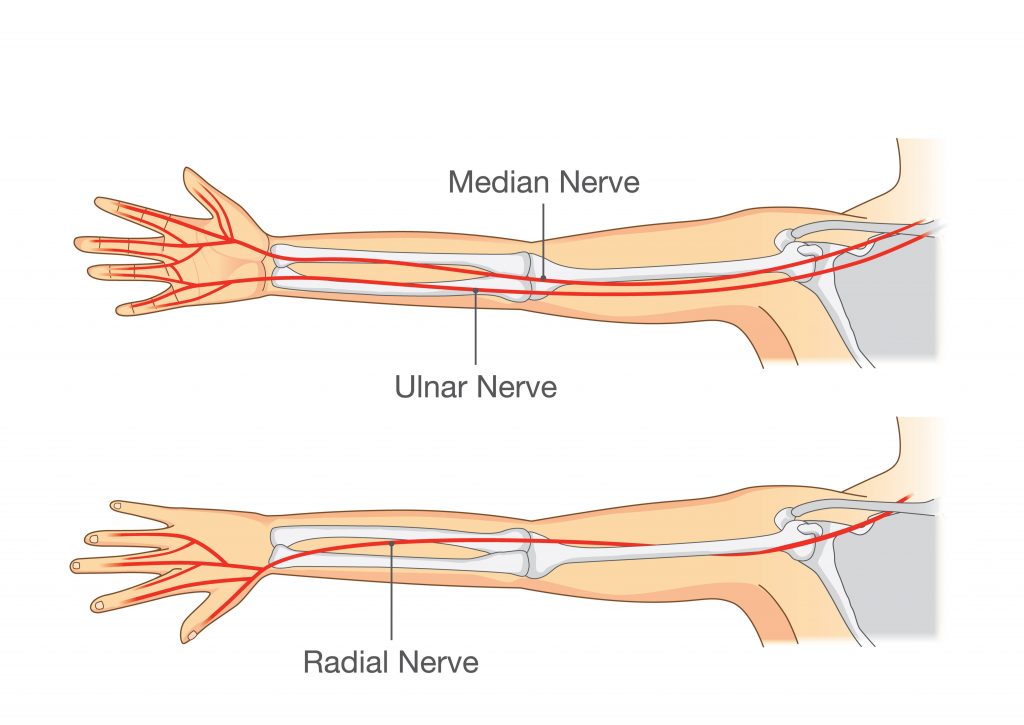
Your median nerve travels down the palm side of your forearm and supplies the muscles and skin receptors to part of the forearm and hand.
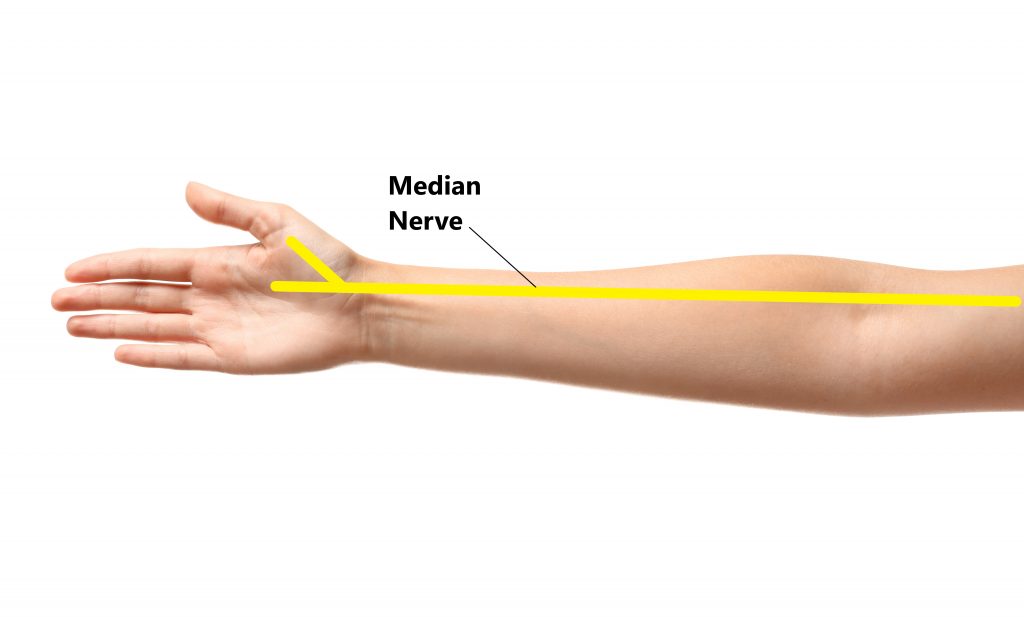
All of the muscles responsible for closing your fingers and bending your wrist are also located on the palm side of the forearm. Connecting these muscles to the bones of the hand are your flexor tendons.
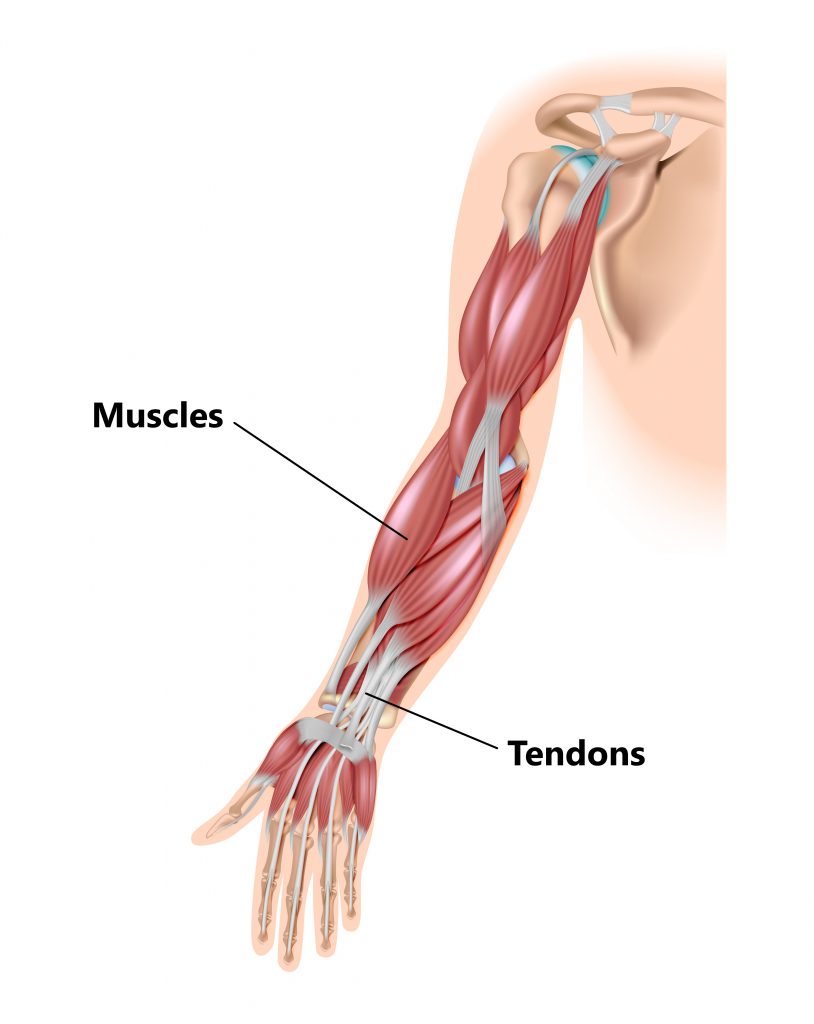
What is the Carpal Tunnel?
Your median nerve and flexor tendons all converge into a narrow opening on the palm side of your wrist, this is known as the carpal tunnel. This is a small inflexible space, the floor and walls are comprised of the little bones of the wrist and the ceiling is formed by a tough fibrous ligament.
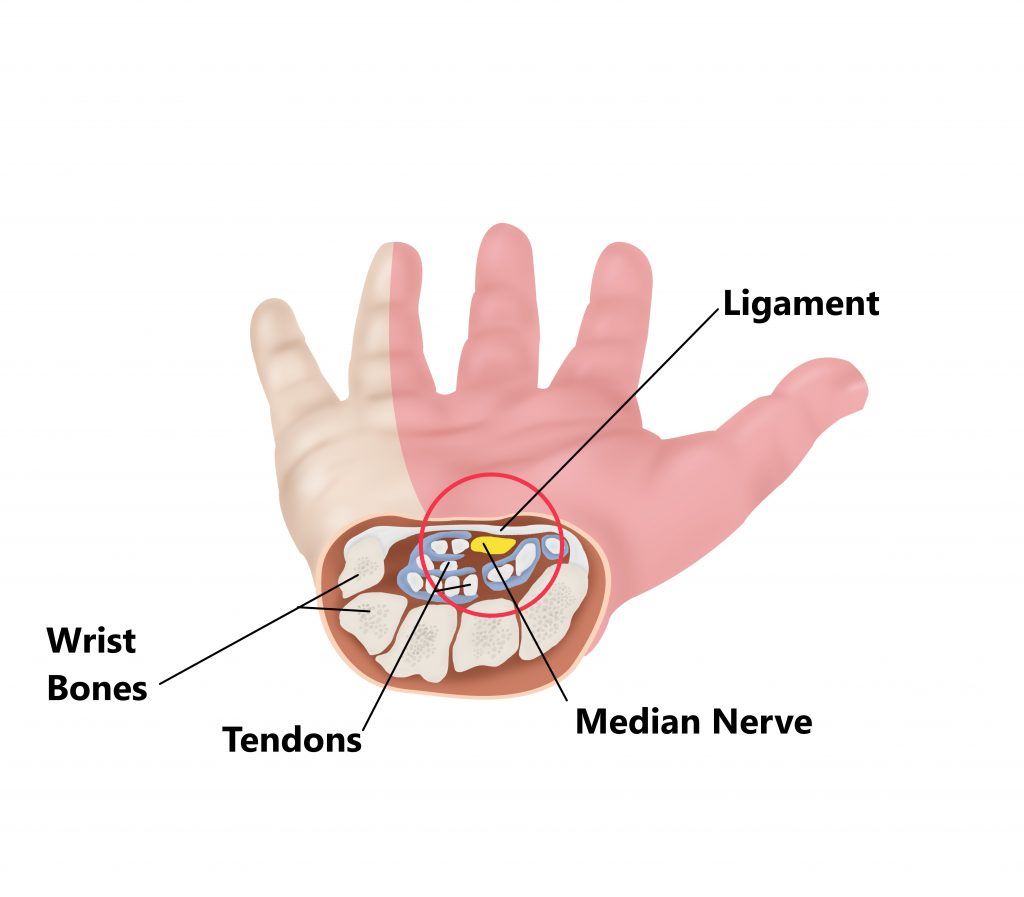
What is Carpal Tunnel Syndrome?
This condition arises when the median nerve becomes compressed due to decreased space within the carpal tunnel.
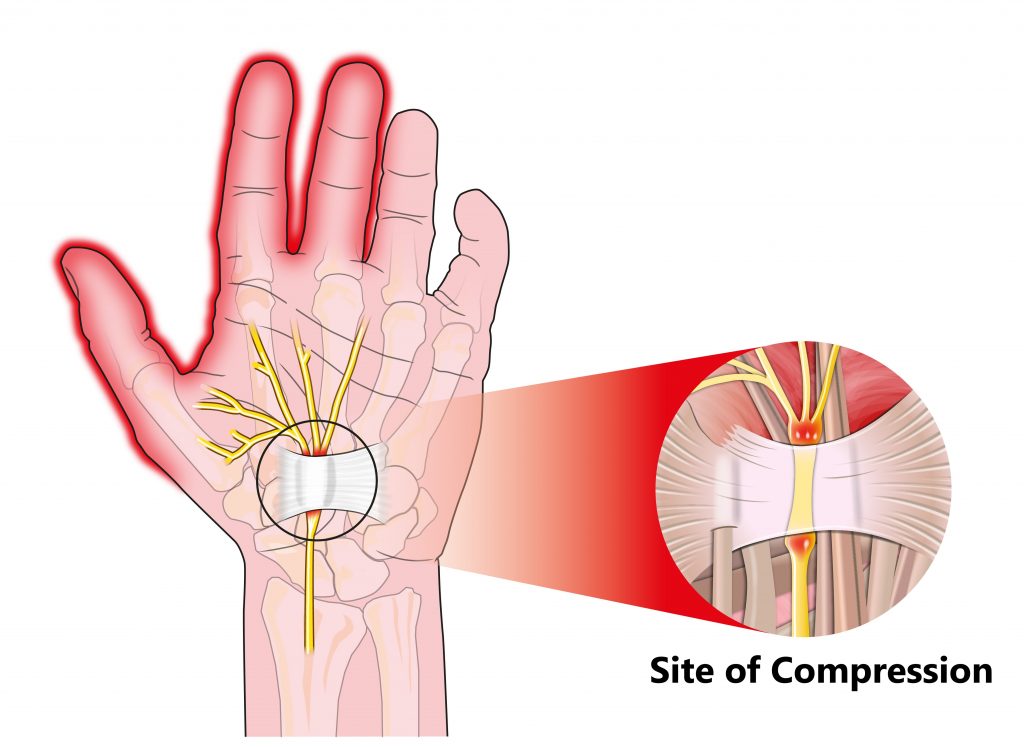
What are the Causes of Carpal Tunnel Syndrome?
- Overuse, repetitive gripping and overuse of the hands (i.e. typing, manual work) can give rise to inflammation and swelling of the tendon sheaths resulting in nerve compression.

- Trauma, healing fractures can result in excessive bone formation around the fracture site, this can narrow the carpal tunnel.
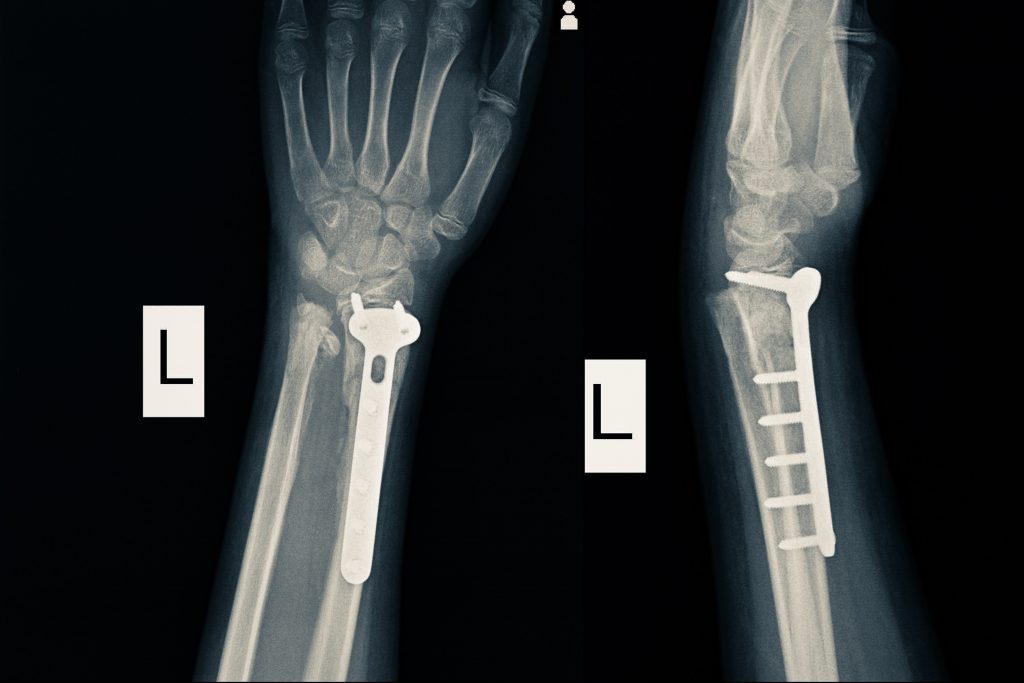
- Prolonged Wrist Positions, activities involving prolonged or repeated repeated wrist flexion or extension (i.e. playing a musical instrument, gymnastics) can place pressure onto the nerve.

- Pregnancy, hormones released during pregnancy can give rise to fluid retention and swelling within the tunnel. This is most common in the third trimester.

- Genetic, Some individuals will naturally have a narrowed tunnel due to hereditary anatomical variations (i.e. abnormal bone shape, unstable ligaments, thickened tendons)
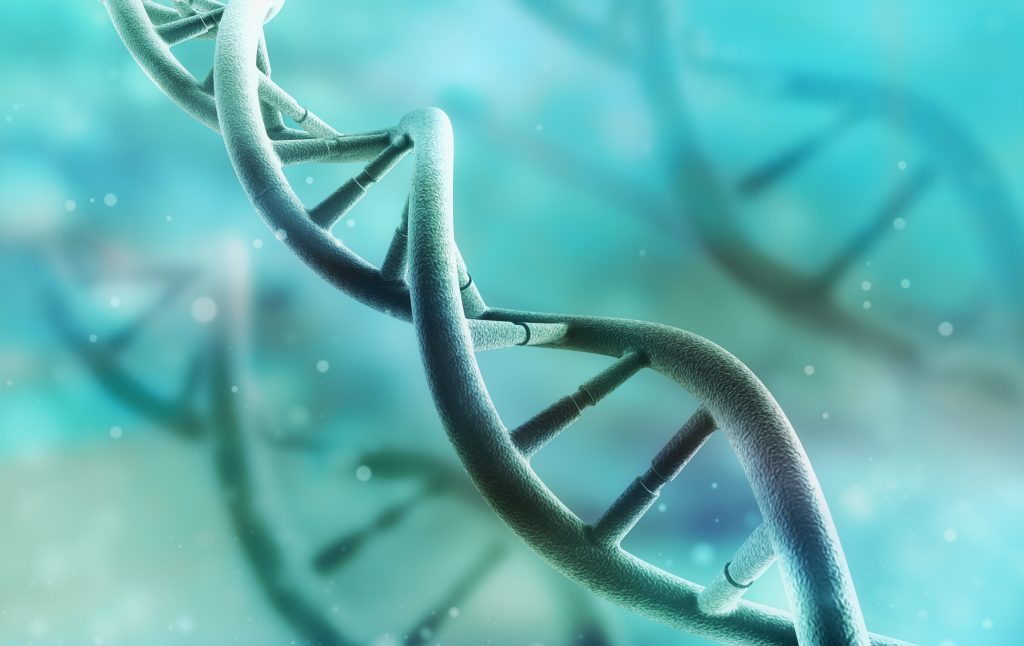
- Health Conditions, diabetes, rheumatoid arthritis, kidney disease and hypothyroidism have been linked to carpal tunnel syndrome.
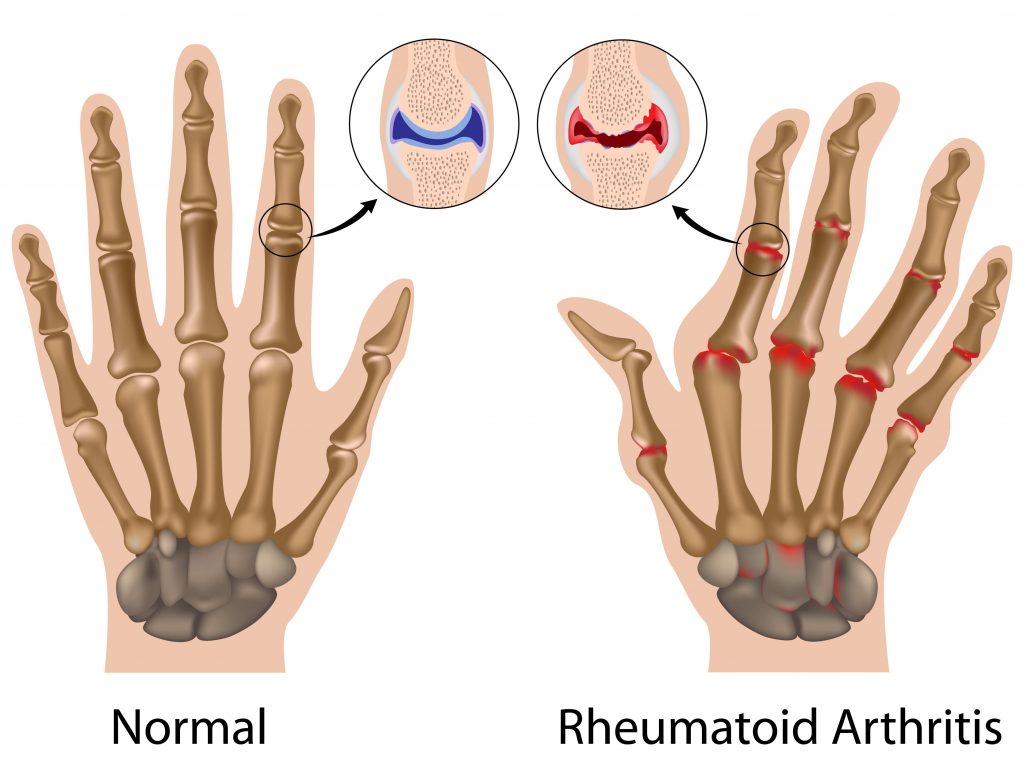
Common Symptoms
- tingling, numbness, burning, loss of sensation into the thumb, first, second and third fingers (see image below)
- wrist and finger pain and/or throbbing
- weakness/clumsiness into the hands
- difficulty with fine motor tasks (i.e. doing up buttons)
- symptoms aggravated by prolonged/repeated wrist postures and alleviated with movement
- aggravation of symptoms at night
- advanced symptoms can result in weakness and wasting of the thumb muscles

Risk Factors
- female gender
- >40 years of age
- obesity
- health conditions (as above)
- engaging in >20 hours of computer work per week
- engaging in prolonged/repetitive activities involving end range wrist flexion/extension (as above)
- repeated exposure to vibration (i.e. heavy power tools)

Diagnosis
Symptoms similar to carpal tunnel syndrome can also arise from other areas of the body (i.e cervical spine). It is important to have your condition accurately diagnosed which should consist of a thorough subjective and physical examination. Imaging and nerve testing may also be required such as:
- xray
- ultrasound
- MRI
- nerve conduction studies (NCS)
- electromyogram (EMG)
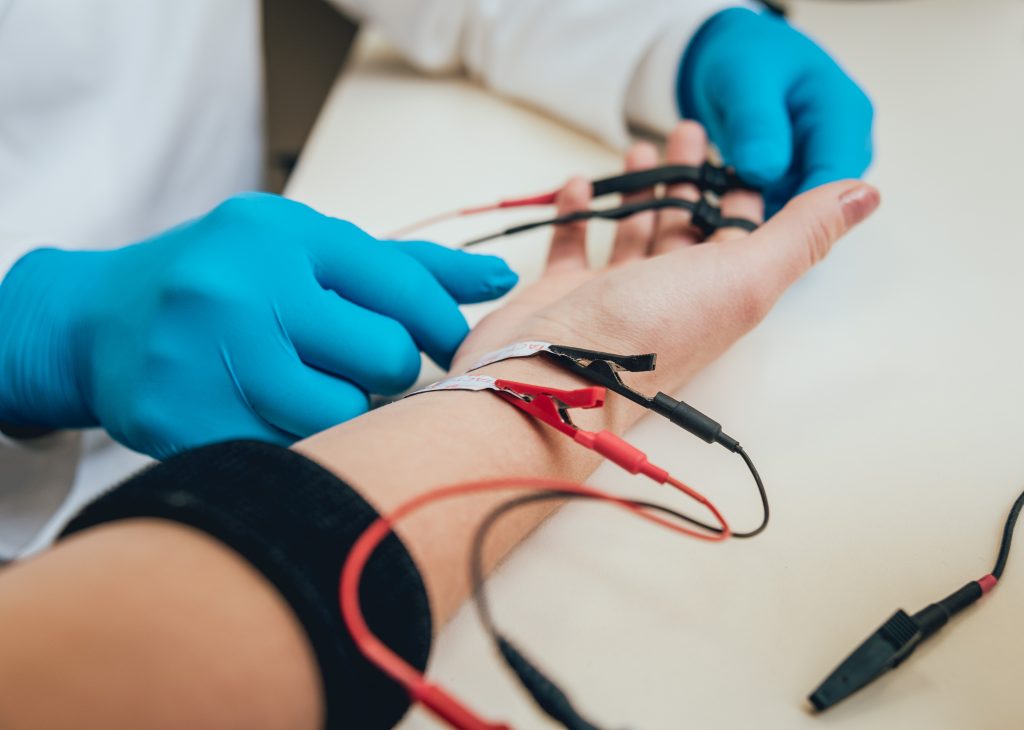
Management
Carpal tunnel syndrome is typically initially managed with conservative physiotherapy treatment. Occasionally, a cortisone injection may be required to alleviate inflammation. In rarer circumstances, advanced symptoms may require surgery to release the carpal tunnel.
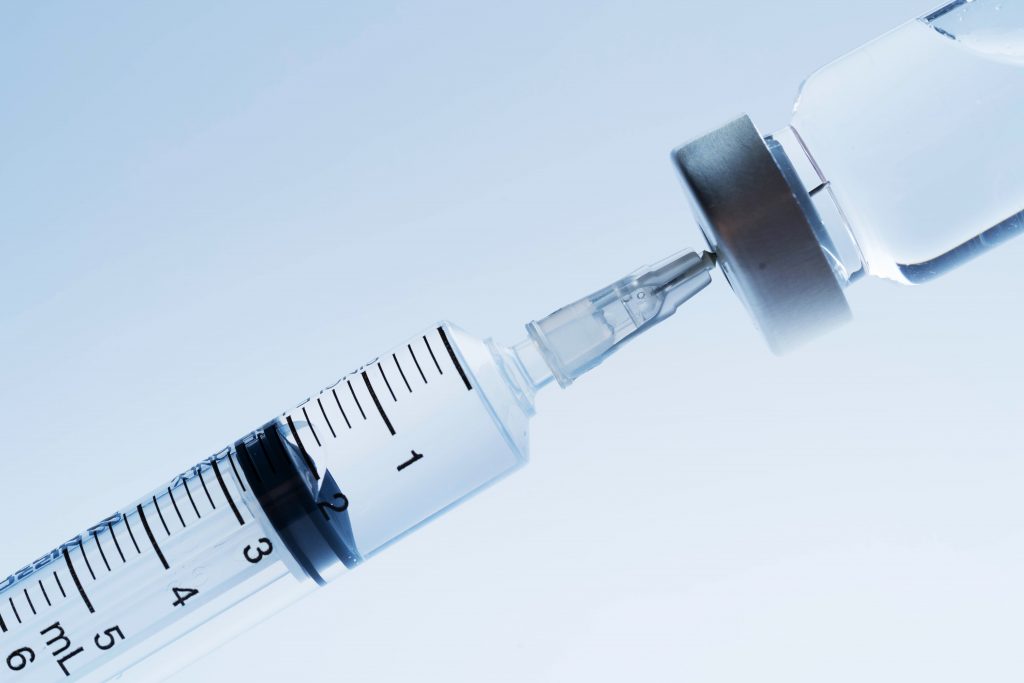
Physiotherapy Management
- Following an acute injury our priority is to minimise the extent of damage, reduce inflammation and decrease pain. Modalities such as RICE (Rest, Ice, Compression, Elevation), strapping, splinting and manual therapy may be used
- Provide education, address unhelpful beliefs regarding the injury, identify and modify aggravating factors (i.e. poor wrist posture)
- Restore pain free wrist range of motion
- Restore nerve flexibility
- Strengthen the muscles of the wrist and upper limbs
- Identify and address movement and postural issues that may have contributed to the injury (i.e. stooped posture, poor positioning of the shoulder blades)
- Graded return to work, sport and function
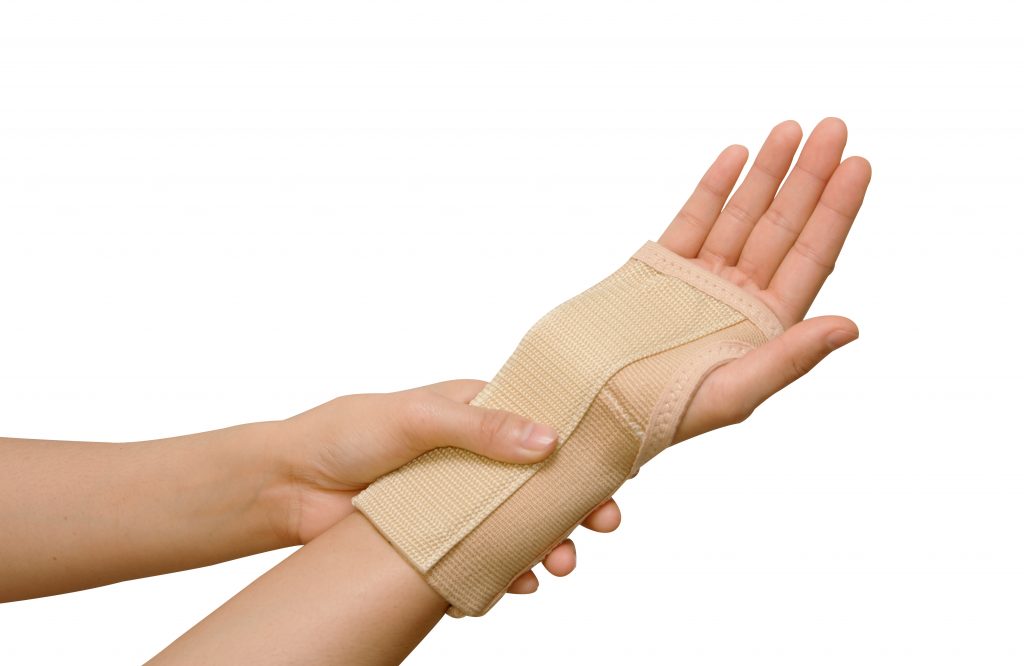
Please keep in mind the information provided is general in nature and should not be used as a substitute to consult your treating health professional. If you have any specific questions or require assistance with your individual treatment requirements please do not hesitate to contact My Family Physio in Mona Vale.
Related Articles